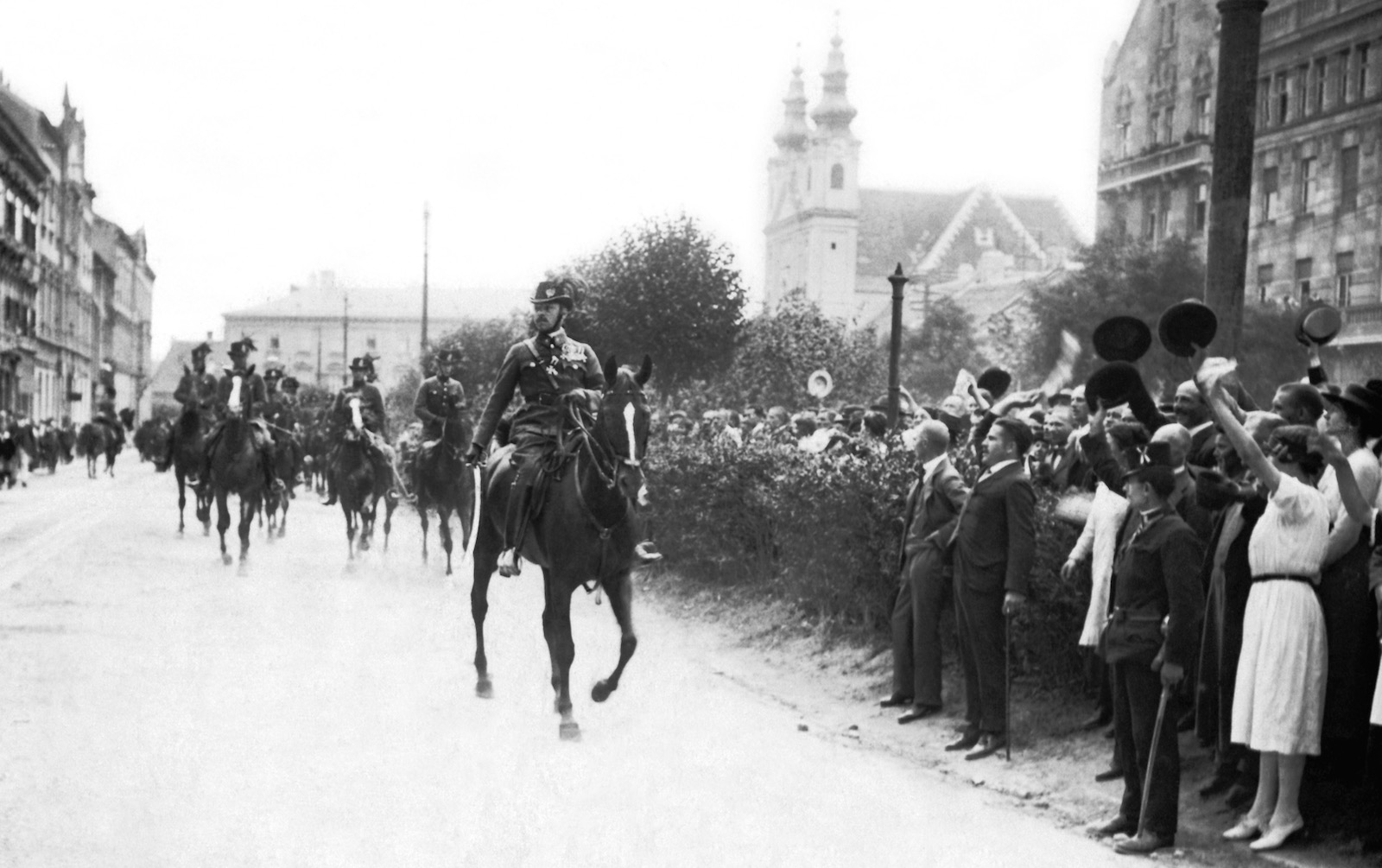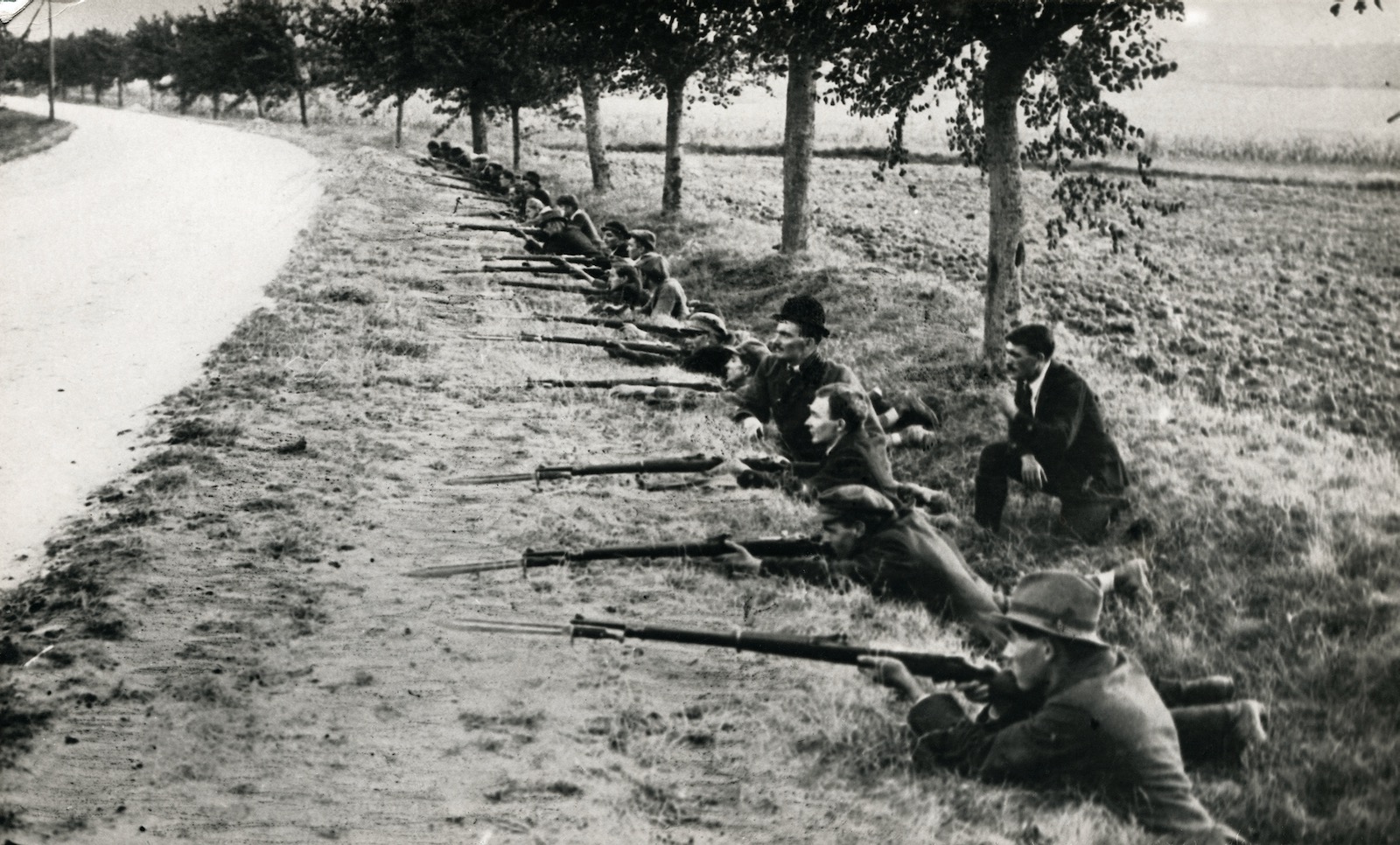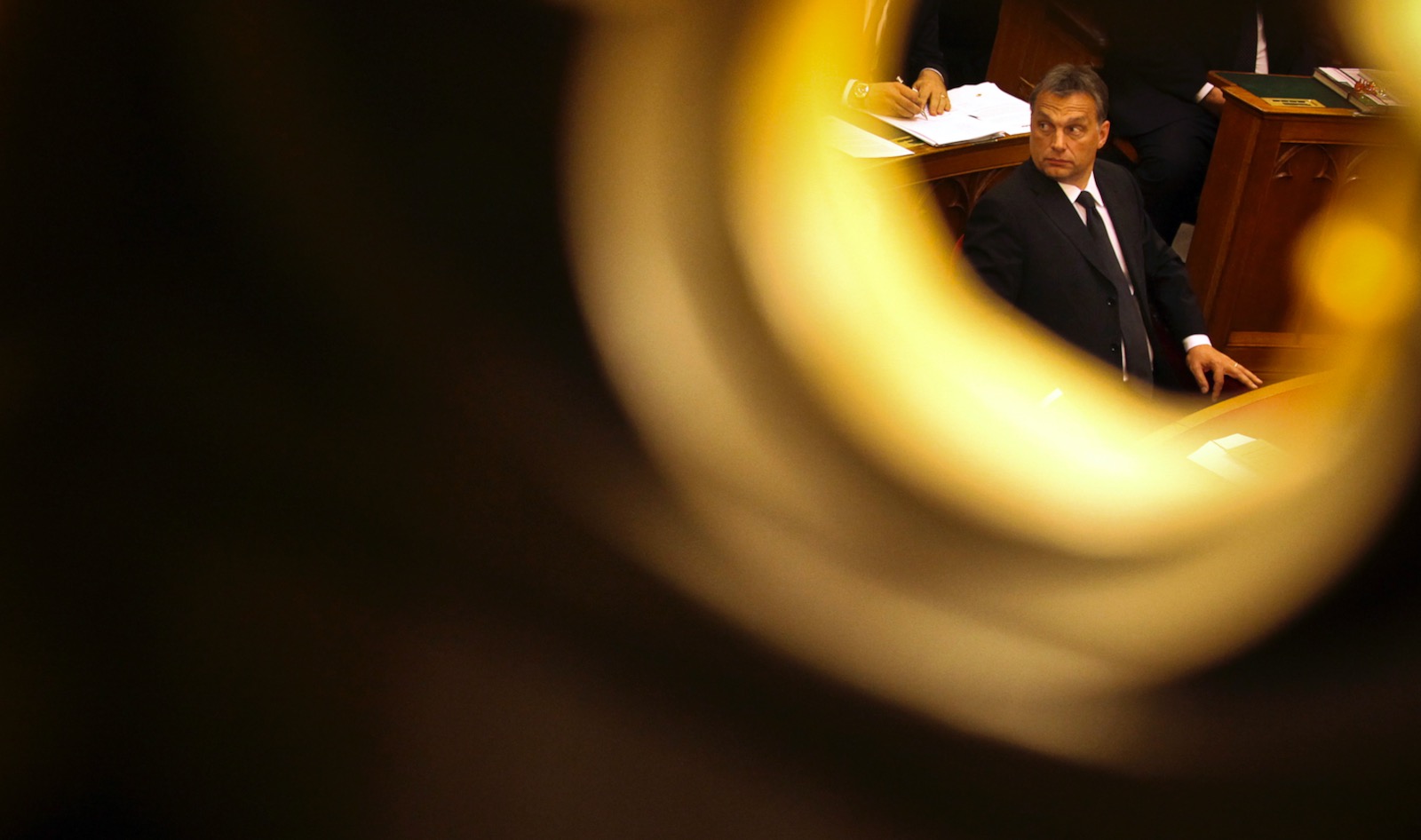At 4:30 PM local time on Thursday June 4, the church bells will toll in Budapest. Citizens are asked to stop work, stand, and bow their heads for a minute’s silence. Opposition politicians will quietly walk together, at an appropriate social distance, to a site of national memorial, while the domineering Hungarian prime minister, Viktor Orbán, and the country’s largely-ceremonial president, János Áder, will give nationally televised addresses.
None of this has anything to do with the coronavirus. At time of writing, 532 people are reported to have died of the disease in Hungary, but there will be other moments to mourn them. On June 4 every year, the nation instead commemorates an event long mythologized as a national death. The Treaty of Trianon was signed in 1920, making this anniversary its centennial.
As Versailles was to Germany, so Trianon was to the Austro-Hungarian Empire. In both treaties, the victors of World War I redrew the borders of the defeated dominions, shoring up resentments and seeding dreams of revenge. The junior partner in the then-defunct empire, Hungary lost 72 percent of its land and 64 percent of its population to newly formed neighbor states, regions that nowadays primarily constitute parts of Romania, Slovakia, Ukraine, and Serbia. The treaty of Trianon is known in Hungary as the békediktátum, or “dictated peace.” It should be no surprise that Hungary’s nationalists harbor grievances.
Long before the arrival of Orbán, the anniversary of the treaty was a lightning rod for irredentist sentiment. In 2000, Miklos Patrubany, the president of the Hungarian World Congress, famously defined a Hungarian as “someone who is pained by Trianon.” This year, it falls to Orbán, with his particular brand of nationalist autocracy, to choreograph the hundredth anniversary commemoration. Though the Covid-19 pandemic has muted the ceremonies, Orbán is still expected to use them to assert his claim to represent the Hungarian-speaking communities who live across large parts of the former empire. Hungary’s neighbors have frequently complained that his rhetoric on the subject is provocative and expansionist.
“Trianon trauma” is not new; it is a foundational element of the modern Hungarian consciousness. Within a year of the treaty, the first monuments of national grief were being erected: research conducted by MoMA curator Juliet Kinchin tells us that, by the 1930s, barely any town in Hungary was without its Trianon memorial flagstaff, usually flying the national colors at half-mast. That decade also saw a booming trade in postcards depicting local Trianon memorials, often with ghostly figures of weeping saints or medieval Hungarian heroes hovering in the background. Sending one to your friends was a solid display of national loyalty. Growing up in these years, my Hungarian grandmother was instructed to pray in school assembly each day for the reversal of the Treaty of Trianon “and the Resurrection of Hungary.” Every child in the nation did the same.
Since the Austro-Hungarian Compromise of 1867, the Kingdom of Hungary had enjoyed a privileged position in the Austro-Hungarian Empire. But within the empire, Magyar people (ethnic Hungarians) had been only one of twelve recognized ethnicities living alongside each other, speaking at least sixteen languages between them. In the early years of the 1920s, nostalgia for empire didn’t always entail Magyar supremacism. The first public memorial to Trianon, a composite of sculptures unveiled in 1921 at Budapest’s Szabadság Tér (Freedom Square) depicted a series of idealized Magyar soldiers fighting as protectors and comrades of figures from the empire’s other ethnic minorities. Early nostalgists of the Austro-Hungarian Empire extolled it as an institution in which minority communities could maintain separate traditions within the safe context of shared loyalty to the emperor, a concept known as kaisertreu.
By the 1930s, however, the national call to reverse the evils of Trianon was inextricably linked to the increasingly fascist bent of the dictator Miklós Horthy, who had seized power in the chaos of 1920. Initially an ally of Nazi Germany, later deposed for being an inadequate puppet, Horthy would unleash but fail to master the forces of Magyar fascism—the same forces that led to Jewish children like my grandmother being exiled or murdered, no matter how diligently they’d prayed for the nation at school.
And during the 1930s, memorials to Trianon were becoming more and more provocative. The town of Zebegény had once been at the heart of Upper Hungary; after Trianon, though, it was a last promontory of Hungarian territory stretching into what was then Czechoslovakia. Between 1935 and 1938, the Hungarian authorities constructed a towering Trianon memorial, national colors drooping sadly from its columns, on the tallest hill in the region. It was designed to be visible across national borders: a comfort to Magyar exiles, a poke in the eye for the Slovaks among whom they now lived.
Advertisement
Viktor Orbán also likes to poke his neighbors in the eye. This May, alongside a message of encouragement to Hungarian students commencing national exams, he posted a map of “Greater Hungary” on his personal Facebook page, drawing scorn from the leaders of Romania and Croatia. (Hungarian and Croatian social media were briefly overrun with arguments about whether Croatian regions had ever, in fact, been part of “the Kingdom of Hungary,” as opposed to simply part of the Austrian Empire.) In April 2018, Orbán played host to his ideological ally Mateusz Morawiecki, the prime minister of Poland, and marked the visit by releasing a photograph of the two viewing a map of so-called Greater Hungary in his Budapest office.
Most of Orbán’s attempts to play with the politics of memory, however, are more strategic. Within days of winning election in 2010, he had established June 4 as a “national day of cohesion,” on which the nation could mourn the “Trianon diktat.” Within months, Orbán had also passed legislation to grant Hungarian citizenship to any person whose ancestors had been subjects of the Kingdom of Hungary before Trianon. By the 2014 elections, these new citizens of “Greater Hungary” had also attained the right to vote. Although the uptake was limited in Ukraine and Slovakia, where dual citizenship is prohibited, this legislation saw the political emergence that year of nearly 200,000 Hungarian voters in Romania and Serbia. In 2014, 95 percent of them cast their votes for Orbán’s Fidesz party. By the 2018 election, the number of such voters had almost doubled. The total number of new Hungarian citizens in the region is at least one million.
In the spring of 2018, I followed Orbán on the election trail to the ethnically diverse town of Subotica—or as the Hungarians call it, Szabadka—a city nestled just across the modern border with Serbia. These are the regions that, in the 1930s, were christened “the Hungarian Sudetenland” by the first Viscount Rothermere, the British press baron who founded the Daily Mail newspaper. (Rothermere, a Nazi-sympathizer, was close to Horthy and funded a number of Trianon memorials in Hungary.) The citizens of Subotica, where I still have Hungarian-speaking family, are keen to project an image of amicable diversity among its Croat, Hungarian, and Serbian populations. Municipal signage is always published in three scripts (Hungarian, Latin-script Croat, and Cyrillic-script Serbian) and many families are intermarried and multilingual. Ethnic violence, they assure me, is something that happens far away, in southern Serbia. With more plausibility, they complain that their biggest problem is not geopolitics but corruption: prominent members of Orbán’s Fidesz party control most of the cross-border economy.
Orbán nurtures carefully the votes of Vojvodina, this large region in modern Serbia, with its 200,000 Hungarian citizens. His government has developed a vast welfare-abroad program, for which only Hungarian-speakers are eligible. Between the 2014 and 2018 elections, his Fidesz government gave out $185 million in Vojvodina alone, in supposed economic stimulus packages to Hungarian-speakers. And despite his own clashes with the European Union, Viktor Orbán has worked to ensure these new Hungarian citizens have access to the benefits of EU membership, even when they live outside Hungary’s borders. It is a strong incentive for the residents of Vojvodina to take up Hungarian citizenship—Serbian citizens do not have EU passports.
When I saw Orbán speak in Vojvodina in 2018, it was ostensibly to re-open the great synagogue of Subotica, finally restored after falling into ruin during the Holocaust. Hungary had contributed over 2.5 million euros to the reconstruction. An odd location, perhaps, for a speech by politician in the midst of running of a virulently anti-Semitic campaign: back in Hungary, the Fidesz campaign had been whipping up hatred against the Jewish-American Hungarian emigré George Soros. But many of Subotica’s Hungarian voters have Jewish heritage and Orbán’s ethnic chauvinism is nothing if not flexible. His government’s involvement had also ensured that the renovated synagogue would serve as a community center for the broader Hungarian-speaking population.
Where, in Budapest, I had driven past scores of Fidezs posters demonizing Soros, here Viktor Orbán hinted instead at an Islamic enemy—as a threat to Jews, Christians, Serbs, and Hungarians alike. On Hungary’s National Day, March 15, Orbán had given a speech flush with old anti-Semitic tropes, warning that “speculators” and “foreign agents” were seeking to undermine Hungary from without. But to this audience in Subotica, just few weeks later, he spoke of years of Judeo-Christian co-existence in a Hungary now threatened by secularism from the West and Islamification from the East. Jews and Christians must unite, he told the assembly, rather than “allow others to replace the cultural subsoil of Europe.” It was hard not hear an echo of the “great replacement” theory peddled by far-right activists in the US. The message fell on receptive ears in Subotica, too. Subotica, and much of the “Hungarian Sudetenland” had found itself in the path of the migrant crisis, on the route to Europe from North Africa. Ethnic Hungarian voters there welcomed Orbán’s promise to keep them in Europe—and to keep non-white newcomers out.
Advertisement
In these regions, Orbán particularly likes to play on Hungary’s supposed past as the last outpost of Christian Europe against the Ottoman Turk. This is the history glorified in nineteenth-century medievalist novels like Géza Gárdonyi’s Eclipse of The Crescent Moon, a tale of demonic Muslims and noble Magyar Christians culminating with the successful Hungarian defense of the northern town of Eger. (The opening chapter, titled in George F. Cushing’s translation “Where do Hungarian Heroes Come From?,” depicts an ugly Turk kidnapping two innocent Hungarian children into slavery.) Defending his aggressive anti-migrant stance in 2017, Orbán quoted Gárdonyi on border defense in a high-profile speech to new police recruits.
If Trianon is the ultimate national symbol of unjust defeat, the Siege of Eger is its shared emblem of righteous victory. Hungarian fascists have historically described Trianon as a Jewish plot—how else could a mighty nation be defeated?—to reignite the ancient incursions of the Ottoman Empire in the region’s south east. The latest reiteration of this nefarious Judeo-Muslim alliance could be seen on the photoshopped posters propagated by the Fidesz party, featuring an image of George Soros snipping open Hungary’s border fences with wire-cutters, allowing hordes of Muslim migrants to invade.
Back in Budapest this week, the showstopper of the Trianon centenary was supposed to be the unveiling of a new memorial, costing nearly $17 million and described by official newspapers as “an intervention in the landscape architecture” of Alkotmány utca (Budapest’s Constitution Street, in the parliamentary district). The coronavirus pandemic has forced a delay, probably until August 20, when Hungary celebrates its founder-king, St. Stephen. But published plans for the site look uncomfortably reminiscent of Holocaust memorials. Pedestrians who walk through a 100-meter ramp will be able to read the engraved names of nearly 13,000 Hungarian settlements that Trianon irredentists consider a true part of Hungary—among them, not only towns in Romania, Serbia, Slovakia, and Ukraine, but more questionably contested parts of modern-day Poland, Croatia, Slovenia, and Austria. The memorial will also feature a fractured granite block and an eternal flame, symbolizing Hungary’s continuing commitment to its fragmented communities.
It would be odd if Hungarians didn’t mourn the losses imposed at Trianon. But Orbán’s particular mode of national mourning comes after two years in which Orbán has made his agenda for a conservative cultural hegemony ever more explicit. In a landmark speech in July 2018, he told supporters that “an era is a spiritual order, a kind of prevailing mood, perhaps even taste… A political system is usually determined by rules and political decisions. An era, however, is… determined by cultural trends, collective beliefs, and social customs. This is now the task we are faced with: we must embed the political system in a cultural era.”
Since then, Orbán has shut down Hungary’s international, liberal university, the Central European University founded by George Soros; forced international NGOs to register as foreign agents, increased control over the Hungarian Academy of Sciences, and launched a state takeover of the 1956 Institute, a historical center dedicated to the 1956 uprising against Soviet domination. (All ten employees have now resigned, citing Orbán’s insistence on imposing politically expedient narratives on Soviet-era history.) He has banned gender studies and effectively ended legal recognition of transgender citizens. His reach, whether direct or indirect, now extends to censorship of theatre and opera. Anti-Semitic and fascist authors such as Jozsef Nyiro, Ferenc Herczeg, and Albert Wass are now compulsory on school curricula; Jewish Hungarian authors such as Imre Kertész and György Spiro have been phased out.
Orbán’s grip only tightens. Last week, he seemed to renounce the autocratic powers seized at the start of the coronavirus pandemic—an argument his defenders gleefully make to Western critics—but this is just another sleight of hand. In fact, the Hungarian Parliament’s new Revocation Bill empowers the prime minister to declare the emergency ended only if and when he wishes to do so.
Kertész, whose removal from the curriculum caused particular consternation, is a Nobel Prize-winning writer on the Hungarian Holocaust. Orbán’s government has made clear that it will not tolerate narratives about the Holocaust that imply guilt on the part of Hungarians. In 2014, his government unveiled a Budapest Memorial “to the Victims of the German Occupation of Hungary,” in which a monstrous German eagle looms over a weeping statue of St. Gabriel, representing Catholic Hungary. Walking around it, you would never learn that the 1944 annexation of Hungary followed a falling-out between two fascist former allies; nor that it involved Jewish victims and Hungarian collaborators. A few meters away stands a new bust of Miklós Horthy, whom Orbán has sought to rehabilitate.
In many ways, the Trianon memorial will be the twin of this memorial to the victims of the German occupation. Both tell a story fundamental to Orbán’s Hungary—as a nation to which injustices happen, but that perpetrates none itself. This Hungary has suffered at the hands of foreigners, but it will rise again.
Perhaps this Trianon anniversary year will pass without further drama. Hungary and its neighbors have enough on their plates fighting a pandemic. Orbán has himself acknowledged that any moves to realize irredentist ambitions by military annexation are inconceivable in the era of the European Union. After a speech last December, he assured a questioner that any secession of Transylvania—another region lost at Trianon—from Romania was unrealistic. All he sought, Orbán assured the world, was to establish Hungarian leadership in building a new Central Europe.
That Hungarian leadership, though, is beginning to look a lot like cultural annexation. And what Viktor Orbán may not say himself while conducting international diplomacy, he tolerates in his outriders. Nationalist calls for a return to “Greater Hungary” are here to stay.





